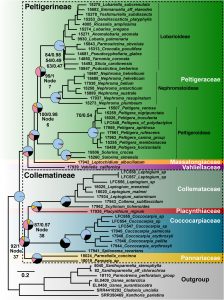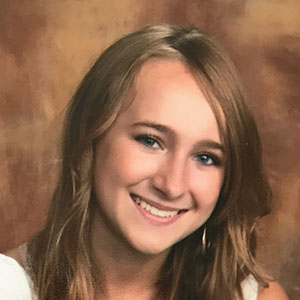 Olivia presented her undergraduate research project entitled “Conserved progenitors of the hybrid moss Physcomitrium immersum across North America” at the EEEB undergraduate research symposium and was selected to compete at the All Biology undergraduate research symposium on Friday, April 29th. Congrats and good luck!
Olivia presented her undergraduate research project entitled “Conserved progenitors of the hybrid moss Physcomitrium immersum across North America” at the EEEB undergraduate research symposium and was selected to compete at the All Biology undergraduate research symposium on Friday, April 29th. Congrats and good luck!
Author: Bernard Goffinet
New publication
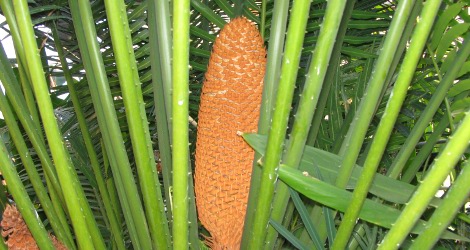
Liu Y., S. Wang, L. Li, T. Yang, S. Dong, T. Wei, S. Wu, Y. Liu, Y. Gong, X. Feng, J. Ma, G. Chang, J. Huang, Y. Yang, H. Wang, M. Liu, Y. Xu, H. Liang, J. Yu, Y. Cai, Z. Zhang, Y. Fan, W. Mu, S. Kumar Sahu, S. Liu, X. Lang, L. Yang, N. Li, S. Habib, Y. Yang, A.J. Lindstrom, P. Liang, B. Goffinet, S. Zaman, Jill. L. Wegrzyn, D. Li, J. Liu, J. Cui, E.C. Sonnenschein, X. Wang, J. Ruan, J.-Y. Xue, Z.-Q. Shao, C. Song, G. Fan, Z. Li, L. Zhang, J. Liu, Z.-J. Liu, Y. Jiao, X.-Q. Wang, H. Wu, E. Wang, M. Lisby, H. Yang, J. Wang, X. Liu, X. Xu, N. Li, P.S. Soltis, Y. Van de Peer, D.E. Soltis, X. Gong, H. Liu, S. Zhang. 2022. The cycad genome and the early evolution of seed plants. Nature Plants 8: 389–401. pdf Google Scholar
Abstract reads: Cycads represent one of the most ancient lineages of living seed plants. Identifying genomic features uniquely shared by cycads and other extant seed plants, but not non-seed-producing plants, may shed light on the origin of key innovations, as well as the early diversification of seed plants. Here, we report the 10.5-Gb reference genome of Cycas panzhihuaensis, complemented by the transcriptomes of 339 cycad species. Nuclear and plastid phylogenomic analyses strongly suggest that cycads and Ginkgo form a clade sister to all other living gymnosperms, in contrast to mitochondrial data, which place cycads alone in this posi- tion. We found evidence for an ancient whole-genome duplication in the common ancestor of extant gymnosperms. The Cycas genome contains four homologues of the fitD gene family that were likely acquired via horizontal gene transfer from fungi, and these genes confer herbivore resistance in cycads. The male-specific region of the Y chromosome of C. panzhihuaensis contains a MADS-box transcription factor expressed exclusively in male cones that is similar to a system reported in Ginkgo, suggesting that a sex determination mechanism controlled by MADS-box genes may have originated in the common ancestor of cycads and Ginkgo. The C. panzhihuaensis genome provides an important new resource of broad utility for biologists.
New publication on lichens
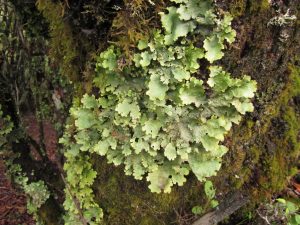 Simon A., B. Goffinet, L.S. Wang, T. Spribille, T. Goward, T. Pystina, N. Semenova, N.V. Stepanov, B. Moncada, R. Lücking, N. Magain & E. Sérusiaux. 2022. Global phylogeny and taxonomic reassessment of the genus Dendriscosticta (Ascomycota: Peltigerales). Taxon 71: 256–287. pdf Google Scholar
Simon A., B. Goffinet, L.S. Wang, T. Spribille, T. Goward, T. Pystina, N. Semenova, N.V. Stepanov, B. Moncada, R. Lücking, N. Magain & E. Sérusiaux. 2022. Global phylogeny and taxonomic reassessment of the genus Dendriscosticta (Ascomycota: Peltigerales). Taxon 71: 256–287. pdf Google Scholar
Abstract reads: The genus Dendriscosticta (Ascomycota: Peltigerales) encompasses several distinctive lichen-forming fungal species restricted to the Northern Hemisphere. Most are flagship species of old-growth forests with good air quality. A global phylogeny ofthe genus based on multilocus sequence data (ITS,RPB1,EF-1α,MCM7), model-based phylogenetic methods, and morphologicaland chemical assessments, reveals a high level of cryptic speciation often associated with restricted geographical distribution and/orchemical characters. Using sequence-based species delimitation approaches, we circumscribe two main clades referred to as the D. wrightii clade, with five unequivocal species, including D. gelida sp. nov., and the D. praetextata clade, with eight putative species, including D. phyllidiata sp. nov. The absence of recently collected material of D. hookeri comb. nov. from the type locality unfortunately prevents assignment of this epithet to one of the five supported lineages sharing this morphotype. Three new combinations are proposed: D. hookeri, D. insinuans comb. nov. and D. yatabeana comb. nov. Epitypes are designated for D. wrightii and D. yatabeana. Species diversity within the genus increased from four to nine. Our morphological assessment confirmed that Sticta and Dendriscosticta can be readily distinguished by the presence of excipular algae whereas the structure of the lower surface pores is not a reliable diagnostic feature.
Antoine awarded Marie Curie Fellowship
 Antoine Simon, currently a BAEF fellow with us has been awarded a highly competitive two year Marie Skłodowska-Curie Postdoctoral Fellowship from the European Union, for his project entitled “FRAME – Fungal Research in the Age of Museomic Exploration: revisiting historical lichen collections”.
Antoine Simon, currently a BAEF fellow with us has been awarded a highly competitive two year Marie Skłodowska-Curie Postdoctoral Fellowship from the European Union, for his project entitled “FRAME – Fungal Research in the Age of Museomic Exploration: revisiting historical lichen collections”.New publication on mosses
Yu J., Y. Cai, Y. Zhu, Y. Zeng, S. Dong, K. Zhang, S. Wang, L. Li, B. Goffinet, H. Liu & Y. Liu. 2022. Chromosome-level genome assemblies of two Hypnales mosses reveal high intergeneric synteny. Genome Biology and Evolution 14: evac020. pdf Google scholar
Abstract reads: Mosses compose one of the three lineages of bryophytes. Today, about 13,000 species of mosses are recognized from across the globe, and at least a third of this diversity composes the Hypnales, a lineage characterized by an early rapid radiation. We sequenced and de novo assembled the genomes of two hypnalean mosses, namely Entodon seductrix and Hypnum curvifolium, based on the 10x genomics and Hi-C data. The genome assemblies of E. seductrix and H. curvifolium comprise 348.4 Mb and 262.0 Mb, respectively, estimated by k-mer analyses to represent 93.3% and 97.2% of their total genome size. Both genomes were assembled at the chromosome-level, with scaffold N50 of 30.0 Mb and 20.7 Mb, respectively. The annotated genome of E. seductrix comprises 25,801 protein-coding genes and that of H. curvifolium 29,077, estimated to represent 96.8% and 97.2%, respectively, of the total gene spaces based on BUSCO assessment. For both genomes, most contigs were anchored to the largest 11 pseudomolecules, corresponding to the 11 chromosomes of the two species, and each with a putative sex-related chromosome characterized by low gene density. The chromosomes of E. seductrix and H. curvifolium are highly syntenic, suggests limited architectural shifts occurred following the rapid radiation of the Hypnales. We compared their genomic features to the model moss Physcomitrium patens. The hypnalean moss genomes lack signatures of recent whole genome duplication (WGD). The presented high-quality moss genomes provide new resources for comparative genomics to potentially unveil the genomic evolution of derived moss lineages.
New publication on lichens
Widhelm T.J., F. Grewe, B. Goffinet, M. Wedin, T. Goward, L.F. Coca, I. Distefano, A. Košuthová & H.T. Lumbsch. 2021. Phylogenomic reconstruction addressing the Peltigeralean backbone (Lecanoromycetes, Ascomycota). Fungal Diversity
110: 59–73. pdf Google scholar
Abstract reads: Rapid radiations in Fungi are only beginning to be studied with phylogenomic data. The evolutionary history of the lichenized fungal order Peltigerales has not been well resolved, particularly for the Collematineae. Here, we used concatenation and coalescent-based species tree methods to reconstruct the phylogeny of the Peltigerales based on sequences of 125 nuclear single-copy exon sequences among 60 samples, representing 58 species. Despite uneven, lineage-specific missing data and significant topological incongruence of individual exon trees, the resulting phylogenies were concordant and successfully resolved the phylogenetic relationships of the Peltigerales. Relationships in the Collematineae were defined by short branches and lower nodal support than in other parts of the tree, due in part to conflicting signal in exon trees, suggesting rapid diversification events in the early evolution of the suborder. Using tree distance measures, we were able to identify a minimum subset of exons that could reconstruct phylogenetic relationships in Peltigerales with higher support than the 125-exon dataset. Comparisons between the minimum and complete datasets in species tree inferences, bipartition analyses, and divergence time estimations displayed similar results, although the minimum dataset was characterized by higher levels of error in estimations of divergence times. Contrasting our inferences from the complete and minimum datasets to those derived from few nuclear and mitochondrial loci reveal that our topology is concordant with topologies reconstructed using the nuclear large subunit and mitochondrial small subunit ribosomal DNA markers, but the target capture datasets had much higher support values. We demonstrated how target capture approaches can effectively decipher ancient rapid radiations in cases where well resolved individual exon trees are sufficiently sampled and how to identify subsets of loci that are appropriate for fungal order-level phylogenetics.
Antoine Simon Joins lab on BAE fellowship
 Antoine Simon, who graduated from the University of Liège, Belgium, is joining our lab for a year, based on a fellowship from the Belgian American Educational Foundation. Antoine’s research focuses on lichenized fungi and their symbiotic partners, their evolution and diversification, and interactions.
Antoine Simon, who graduated from the University of Liège, Belgium, is joining our lab for a year, based on a fellowship from the Belgian American Educational Foundation. Antoine’s research focuses on lichenized fungi and their symbiotic partners, their evolution and diversification, and interactions.
Antoine has stayed at UCONN twice before as part of his Master’s thesis and doctoral dissertation projects.
New publications on bryophytes
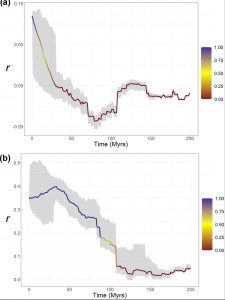 Collart F., J. Wang, J. Patino, A. Hagborg, L. Söderström, B. Goffinet, N. Magain, O.J. Hardy & A. Vanderpoorten. 2021. Macroclimatic structuring of spatial phylogenetic turnover in liverworts. Ecography43: 1474–1485. pdf
Collart F., J. Wang, J. Patino, A. Hagborg, L. Söderström, B. Goffinet, N. Magain, O.J. Hardy & A. Vanderpoorten. 2021. Macroclimatic structuring of spatial phylogenetic turnover in liverworts. Ecography43: 1474–1485. pdf
Abstract reads: Phylogenetic turnover has emerged as a powerful tool to identify the mechanisms by which biological communities assemble. When significantly structured along environmental gradients, phylogenetic turnover evidences phylogenetic niche conservatism, a critical principle explaining patterns of species distributions at different spatio–temporal scales. Here, we quantify the contribution of geographic and macroclimatic drivers to explain patterns of phylogenetic turnover in an entire phylum of land plants, namely liverworts. We further determine whether climatic niche conservatism has constrained the distribution of liverworts in the course of their evolutionary history. Two datasets, one insular, focused on 60 archipelagos and including 2346 species, and the second global, including 6334 species in 451 oceanic and continental operational geographic units (OGUs) worldwide, were assembled. Phylogenetic turnover among OGUs was quantified through πst statistics. πst-through-time profiles were generated at 1 Myr intervals along the phylogenetic time-scale and used to compute the correlation between πst, current geographic distance and macroclimatic variation with Mantel tests based on Moran spectral randomization to control for spatial autocorrelation. The contribution of macroclimatic variation to phylogenetic turnover was about fourtimes higher than that of geographic distance, a pattern that was consistently observed in island and global geographic settings, and with datasets including or excluding species-poor OGUs. The correlation between phylogenetic turnover and geographic distance rapidly decayed at increasing phylogenetic depth, whereas the relationship with macroclimatic variation remained constant until 100 Mya. Our analyses reveal that changes in the phylogenetic composition among liverwort floras across the globe are primarily shaped by macroclimatic variation. They demonstrate the relevance of macroclimatic niche conservatism for the assembly of liverwort floras over very large spatial and evolutionary time scales, which may explain why such a pervasive biodiversity pattern as the increase of species richness towards the tropics also applies to organisms with high dispersal capacities.
New publications on bryophytes
Frangedakis E., F. Guzman-Chavez, M. Rebmann, K. Markel, Y. Yu, A. Perraki, S. Wai Tse, Y. Liu, J. Rever, S. Sauret-Gueto, B. Goffinet, H. Schneider & J. Haseloff. 2021. A system for rapid genome engineering and hyper-expression in plastids. ACS Synthetic Biology 10: 1651–1666. pdf Google scholar
Abstract reads: Chloroplasts are attractive platforms for synthetic biology applications since they are capable of driving very high levels of transgene expression, if mRNA production and stability are properly regulated. However, plastid transformation is a slow process and currently limited to a few plant species. The liverwort Marchantia polymorpha is a simple model plant that allows rapid transformation studies; however, its potential for protein hyperexpression has not been fully exploited. This is partially due to the fact that chloroplast post-transcriptional regulation is poorly characterized in this plant. We have mapped patterns of transcription in Marchantiachloroplasts. Furthermore, we have obtained and compared sequences from 51 bryophyte species and identified putative sites for pentatricopeptide repeat protein binding that are thought to play important roles in mRNA stabilization. Candidate binding sites were tested for their ability to confer high levels of reporter gene expression in Marchantia chloroplasts, and levels of protein production and effects on growth were measured in homoplastic transformed plants. We have produced novel DNA tools for protein hyperexpression in this facile plant system that is a test-bed for chloroplast engineering.
Congratulations to Kris: Stanley Greene awardee
I am delighted to share the news that Kris Anderson was awarded the Stanley Greene Award from the International Association of Bryologists in support of her project entitled “Experimentally testing the fundamental assumption that shifts in ploidy facilitate shifts in sexuality in a dioicous moss.” Congratulations. Looking forward to the outcome. Good luck.
